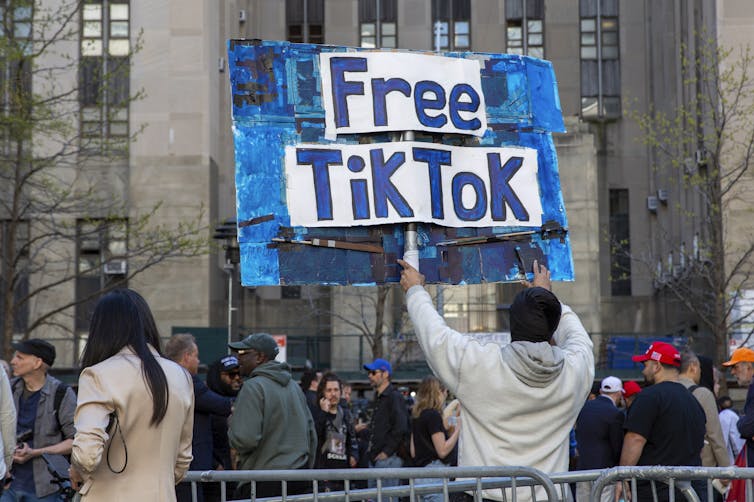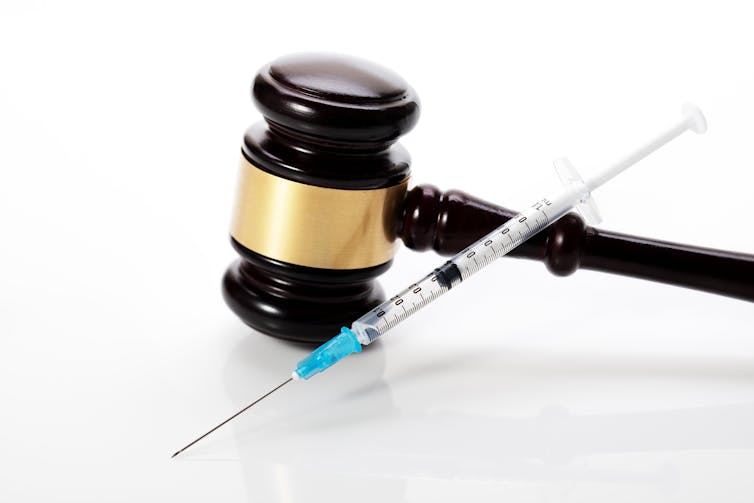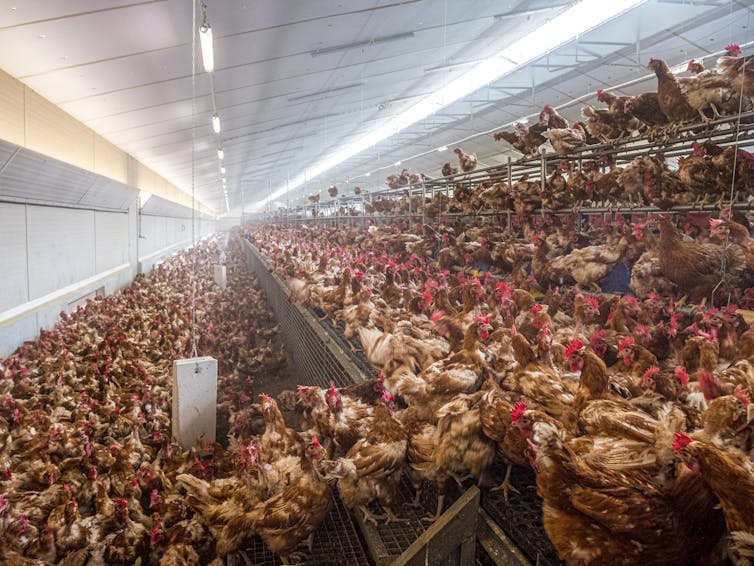TikTok users worry about losing their social media platform, but First Amendment rights are on the line, too.
Anupam Chander, Georgetown University and Gautam Hans, Cornell University
TikTok, the short-video company with Chinese roots, did the most American thing possible on May 7, 2024: It sued the U.S. government, in the person of Attorney General Merrick Garland, in federal court. The suit claims the federal law that took effect on April 24, 2024, banning TikTok unless it sells itself violates the U.S. Constitution.
The law names TikTok and its parent company, ByteDance Ltd., specifically. It also applies to other applications and websites reaching more than a million monthly users that allow people to share information and that have ownership of 20% or more from China, Russia, Iran or North Korea. If the president determines that such applications or websites “present a significant threat to the national security,” then those apps and websites, too, must either be sold or banned from the U.S.
TikTok’s suit says that the law violates the First Amendment by failing to provide evidence of the national security threat posed by the app and for failing to seek a less restrictive remedy. Despite legislators’ claims to the contrary, the law forcing the divestiture of TikTok – the Protecting Americans from Foreign Adversary Controlled Applications Act – implicates First Amendment interests. In our view, it does so in ways that ripple beyond this specific case.
As a company incorporated in the United States that provides an online publishing platform, TikTok has a right protected by the First Amendment to select what messages – in this case, user videos – it chooses to publish.
A ban appears to us, scholars who study law and technology, to be a massive prior restraint, which is generally barred by U.S. courts. Prior restraint is action by the government to prevent speech, typically some form of publication, before it occurs.
Speech in the crosshairs
The law’s backers say that it is not a ban – all TikTok has to do is sell itself. These supporters describe the bill as a divestiture, a purely economic regulation that they say should insulate it from First Amendment challenge. After the sale, users could happily keep on using TikTok, not caring who owns the company. But the law seems to us an attempt to control speech by mandating a change in ownership.
Changing the speech content on the app is the express goal of some of the law’s backers. The principal author of the bill, former U.S. Rep. Mike Gallagher, who stepped down from office in April to join a venture capital firm partly backed by Microsoft, explained to The New York Times that he was principally concerned about the potential for the Chinese Communist Party to spread propaganda on the app. The Times and The Wall Street Journal have reported that Congress passed this bill in part because of unsubstantiated accusations that TikTok was unfairly promoting one side in the Israel-Hamas war.
Imagine if the government told Jeff Bezos that he had to sell The Washington Post because it was worried that he might push a particular agenda using his control of the newspaper. Or to use a digital analogy, what if the government told Elon Musk that he had to sell X, formerly Twitter, because it didn’t like his content moderation of legal speech? Those scenarios clearly have a connection to First Amendment protections.
Ownership matters
Transferring TikTok’s ownership from one company to another matters greatly for the purposes of First Amendment analysis.
Supreme Court Justice Elena Kagan observed during oral arguments in a case unrelated to TikTok’s ownership that ownership can make a difference in an app. She noted that the sale of Twitter to Elon Musk changed the character of the app. Kagan said, “Twitter users one day woke up and found themselves to be X users and the content rules had changed and their feeds changed, and all of a sudden they were getting a different online newspaper, so to speak, in a metaphorical sense every morning.”
Indeed, The Washington Post found a rightward tilt after Twitter changed hands.
By forcing the sale of TikTok to an entity without ties to the Chinese Communist Party, Congress’ intent with the law is to change the nature of the platform. That kind of government action implicates the core concerns that the First Amendment was designed to protect against: government interference in the speech of private parties.
U.S. Rep. Raja Krishnamoorthi, co-sponsor of the House bill on TikTok, pointed to another instance where the U.S. government ordered a Chinese company to sell a U.S. app. In 2019, the Committee on Foreign Investment in the United States ordered the new Chinese owners of Grindr to sell the dating app, which the Chinese owners did the following year. In that case, the foreign owners could not assert First Amendment rights in the United States, given that they were outside the U.S., and thus no court considered this issue.
National security claims
The government hasn’t disclosed to the public the national security concerns cited in the TikTok law. While such concerns, if accurate, might warrant some kind of intervention, some Americans are likely to decline to take claims of national security urgency on good faith. To address skepticism of secret government power, particularly when it involves speech rights, the government arguably needs to present its claims.
U.S. Sens. Richard Blumenthal and Marsha Blackburn, both of whom supported the TikTok law and have seen the government’s secret evidence, called for the declassification of that information. We believe that’s a vital step for the public to properly consider the government’s claim that a ban is warranted in this instance. In any case, the courts will ultimately weigh the secret evidence in determining whether the government’s national security concerns justified this intrusion upon speech.
What seems likely to happen, absent judicial invalidation or legislative repeal of the law, is a world in which TikTok cannot effectively operate in the United States in a year’s time, with mobile app stores unable to push out updates to the software and Oracle Corp. unable to continue hosting the app and its U.S. user data on its servers. TikTok could go dark on Jan. 19, 2025, in the United States.
Anupam Chander, Professor of Law and Technology, Georgetown University and Gautam Hans, Associate Clinical Professor of Law, Cornell University
This article is republished from The Conversation under a Creative Commons license. Read the original article.































































